Speaker
Description
Diffusion models (DMs)[1]have emerged as top contenders for generating data and images in AI,
offering superior quality and training stability compared to generative adversarial networks (GANs).
Latent DMs [2], which operate in latent rather than pixel space, are particularly advantageous for
processing large-scale images efficiently, saving computation time and energy.
In the realm of quantum computing, there has been growing interest in incorporating quantum
architectures into generative models. Quantum GANs (QGANs) [3] , for example, have shown that
even a quantum generator paired with a classical discriminator can produce better-quality images
than classical GANs, even with limited training data or fewer epochs.
There have been recent attempts to generalize DMs to quantum settings: [4] proposed two architectures, one for downsized MNIST images and another operating on the latent space using a pre-trained
autoencoder. Our proposed Quantum Latent Diffusion Model (QLDM)[5] introduces three variational
quantum circuits (VQCs) to handle image and temporal data in the latent space, which is more
computationally efficient and allows to employ angle encoding. Through various analyses, we demonstrate that our QLDM outperforms classical models in terms of faster convergence and reduced data
requirements on both MNIST and Fashion-MNIST datasets.
These advantages can be particularly leveraged in the field of High Energy Physics (HEP), where
both classical and quantum generative models have long been gaining prominence. They enable
significant speedups in key tasks for HEP experiments, such as shower simulation [6], and also hold
promise for applications in large-scale quantum sensor networks and anomaly detection. Given that
HEP is a field where efficient use of computational resources is crucial, our model presents a promising
avenue for leveraging quantum generative techniques in this demanding and resource-intensive domain.
Email Address of submitter
francesca.defalco@uniroma1.it
